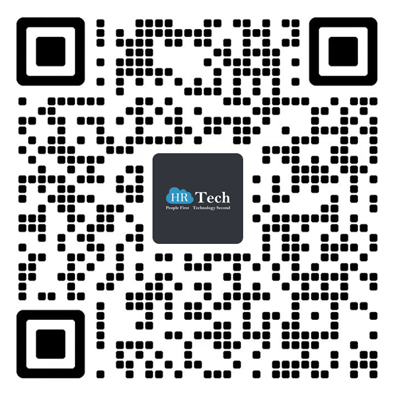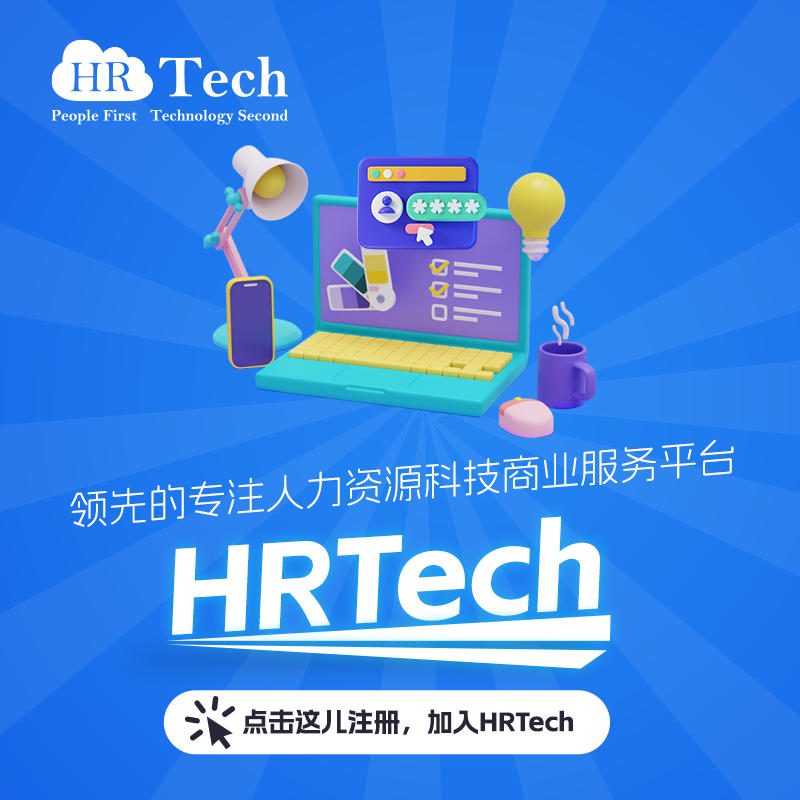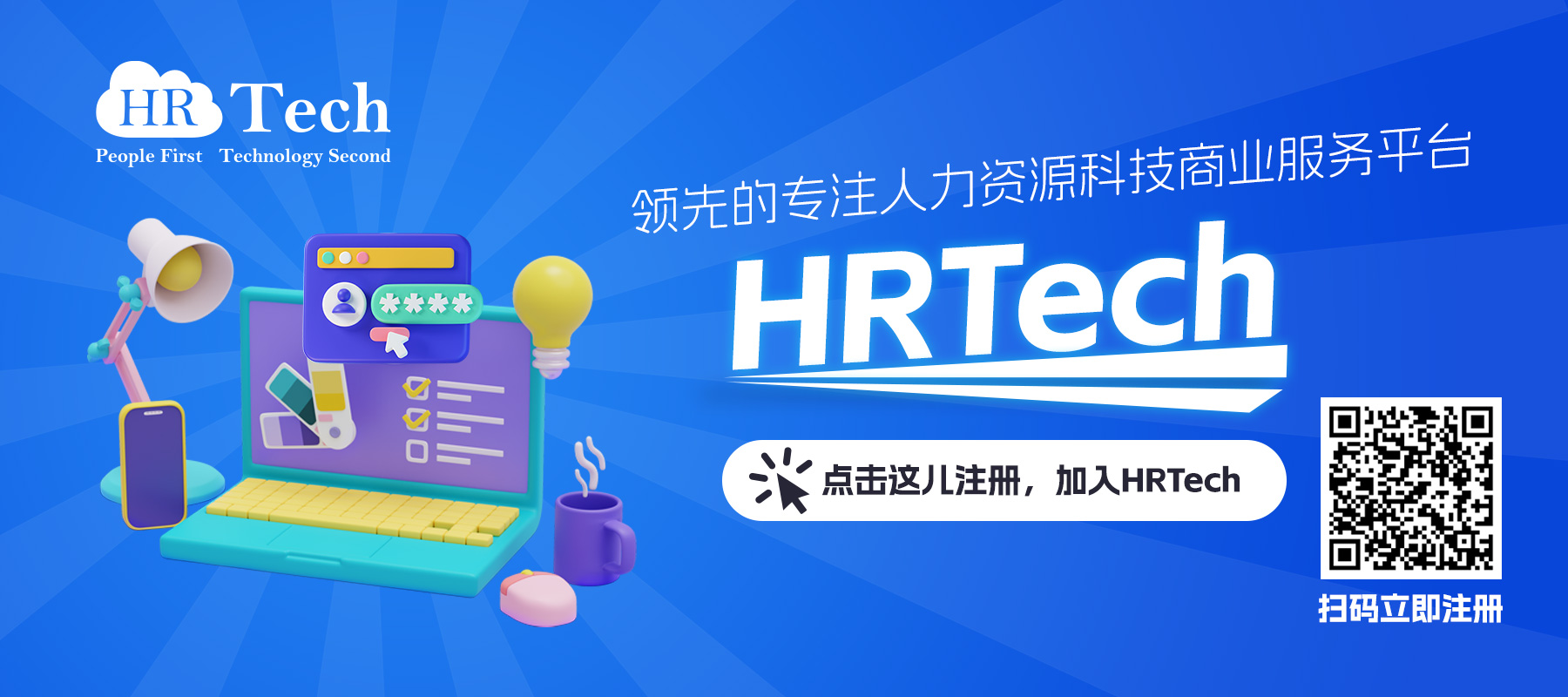人才招聘
如何在人才招聘中运用人工智能?
在过去的几年里,人工智能已经成为头条新闻,它在这里产生了影响。但这对人力资源专业人士和招聘人员来说到底意味着什么?
虽然采用人工智能有其自身的好处,但真正让人头疼的组织是那些将人工智能整合到业务核心的组织。
人力资源专业人士表示:人才招聘是未来几年人工智能将发挥作用的最重要领域之一。
数字化人力资源转型
为了高效地完成这项任务,企业的人力资源部门现在正转向人工智能来完成这项工作。全世界的人力资源专业人员都在依靠人工智能来改善人才招聘过程,缓解这一过程中最艰难的部分之一。
统计数据显示,多达52%的人力资源专业人士表示,人才招聘最艰难的部分之一在于从大量的候选人中识别出合适的候选人。在同一调查中,56%的人才招聘领导者表示,他们今年的招聘量可能会增加,而另外66%的人表示,他们的团队要么保持不变,要么收缩。
换句话说,人才招聘的领导者将不得不利用现有的资源做更多的事情。因此,人工智能似乎是唯一直观的朝这个方向发展的方式。
人工智能已经证明了它在人才招聘中的金属性,像希尔顿这样的组织利用它来评估候选人的评价。结果,该组织的招聘率提高了40%之多,同时,填补一个职位的时间也减少了90%。
但是,即使是有兴趣实施人工智能招聘的组织,也不知道从哪里开始。
为此,我们为你提前收集了可以在组织中使用人工智能进行人才招聘的顶级方法。
让我们一起来看看吧:
筛选平台
在人才招聘中,人工智能最能发挥的作用之一就是筛选候选人。每次放出职位空缺,HR部门都会收到大量的申请。也就是所谓的AI驱动的评估,这些评估无非是招聘前的评估,可以帮助HR们从庞大的人才库中找到最有潜力的候选人。
换句话说,人工智能可以利用现有的数据库,根据候选人的经验、表现、任期等诸多因素,了解哪些候选人会走向成为更成功的人。这可以在很大程度上帮助实现招聘流程的自动化。
智能聊天机器人
人工智能协助人才招聘的另一种方式是通过招聘人员聊天机器人。58%的应聘者表示,他们对一家公司的看法变成了负面的,因为他们在申请后没有收到公司的回复。
有了聊天机器人实时协助求职者,不仅可以改善组织的形象,而且可以获得更多有关招聘过程的清晰。
社会化筛选
除了简历,还有其他平台也可以帮助企业找到合适的求职者。基于人工智能的工具可以扫描社交媒体应用和平台,以浮现完全符合职位描述的被动候选人。
预测就业市场
在市场上获得各种工作岗位的相关预测,对组织来说是非常有利的。它可以让他们直接了解市场上不同需求的可用人才库。
例如,人工智能可以帮助预测具有某些工作类型、经验水平或地点的候选人,为招聘带来更多的相关性。
数字化面试
虽然面试一个人可能是企业最耗费时间的任务之一,但人工智能的介入其实可以缓解这个过程。人工智能软件可以分析应聘者的很多参数,而这些参数往往被人类所忽略。其中包括候选人的语言模式、选词、面部表情等。
简化入职流程
AI可以帮助你为新员工提供他们所需的信息,让他们在早期的日子里更轻松。
一个人工智能系统可以为新员工提供一个资源,每当他们有疑问,如医疗保险政策、休假政策或会议室在哪里时,都可以向他们求助。这就像是一个一站式的服务,可以提供每个新员工所需要的信息。
总结
当涉及到发现合适的候选人并管理与他们的关系时,人工智能可以成为最大的资产之一。换句话说,一方面,人工智能是在帮助为某个特定的职位招聘最优秀的人才,同时也是在以最好的方式管理一个组织的形象。
作者:帕万-库马尔
以上由机智的AI翻译完成,仅供参考!
人才招聘
全球调研报告|顶尖公司招聘部门正在投资研发的十大前瞻性人才招聘技术
准确预测人才引进的未来方向,是每个招聘主管的梦想。然而,目前的招聘趋势调查(如领英的年度全球人才趋势报告)只能揭示一般公司的计划(因为它们是由数百名普通招聘人员填写的)。
如果你了解十大顶尖公司(如亚马逊、Salesforce、Facebook和Alphabet)目前正在对“前瞻性人才招聘技术”投资,你就会对此技术的未来有一个更准确、更先进的了解。
如果你知道他们未来的方向,跟随他们的脚步会很有意义,因为这些公司在预测方面有巨大的资源可以投资。你可以放心地假设,他们的指导将比你微薄的预算做出的假设更准确。此外,了解业界领先的电讯局长投资领域,更容易与他们保持竞争力。
Dr. John Sullivan的全球调研报告发现,顶尖公司的招聘部门正在投资研发的十大前瞻性人才招聘技术:
1、以数据驱动的招聘决策;
2、以商业价值衡量招聘成效;
3、人工智能、机器学习在招聘场景中的应用;
4、不间断输送的人才供应链;
5、其它技术在招聘场景中的应用;
6、精准标靶招聘;
7、联盟合作招聘;
8、招聘营销;
9、雇主品牌的比较优势;
10、灵活用工。
朋友圈的大公司或多或少都在研究吧,小公司则应至少聚焦1-2个。你们在做哪几样?
一、获得至少一项第一名的前瞻性技术领域
1. 数据驱动。
在三家不同的公司中排名第一。
2. AI /机器学习。
在两家不同的公司中排名第一。
3. 业务影响型招聘、协作型招聘、招聘营销和管道式持续招聘。
在某一个公司中排名第一。
二、前瞻性技术的加权投票
这个图表显示了每个前瞻性技术的加权投票(基于可能的业务影响)。
三、排名前五的前瞻性技术的实施步骤
本节为排名前五的前瞻性技术提供了一些推荐的实施步骤,还包括一些现有的最佳实践案例。
前瞻性技术1: 转向数据驱动型招聘
TA的决策是基于数据和分析来揭示哪些行动可以提高招聘质量和业务结果。数据关注的领域通常包括最佳资源、工作匹配、缓慢招聘的影响、预测性招聘标准,以及吸引和销售顶尖候选人的因素。
要考虑的数据相关操作项:
1. 承诺根据数据做出所有决策。
2. 衡量新员工的表现、保留率和失败率(招聘质量),然后确定与之相关的因素。
3. 计算每个招聘经理和招聘人员的“招聘命中率”。
4. 预测新员工未来可能的内部职业发展轨迹。
5. 预测指标的使用和重要性都在增长。
6. 提交给招聘经理的申请者的质量(符合资格的百分比)应该是一个来源指标。
7. 未被录用的应聘者的质量可以告诉你,你是否因为招聘速度慢或应聘者的经验不好而不小心失去了优秀的应聘者。
8. 最好的公司会不断试验和检验与招聘有关的假设。
9. 要知道招聘技术和人工智能在没有足够的数据和大多数情况下的招聘质量数据的情况下是无法运作的。
数据驱动招聘的最佳实践:
1. 五大公司之一透露,该公司已经在组建内部人才、智力和研究团队。
2. 和你的人才分析团队一起测试假设,看看哪些可行,哪些不可行,然后找到改进招聘流程的新方法。
3. 另一家顶级公司报告称,它现在正专注于招聘数据的“外部”方面,比如“市场可用性”和“人才可用性”数据。
4. 改善数据传递,让招聘人员、经理和高管采取行动。
5. 独立于调查之外,根据我们的经验,我们发现谷歌、索迪斯和亚马逊是使用数据的基准公司。
前瞻性技术2: 影响企业的招聘
集中招聘资源,使他们对战略业务目标产生最大的可衡量的直接影响。
要考虑的与业务影响相关的操作项:
1. 不要仅仅满足于与业务目标保持一致,如果可能的话,直接影响它们。
2. 与首席财务官和首席运营官办公室合作,以确保招聘对业务影响的准确和可信的衡量。
3. 从已经测量和量化的工作开始你的业务影响测量,比如销售、客户服务、业务开发和收集。
4. 专注于创收、影响收入和创新工作。如果可能的话,将TA的结果转化为他们的收入影响,因为增加收入对高管的影响最大。例如,每一位表现较好的销售人员每年能增加22万美元的收入。
5. 优先招聘高利润、高增长的业务部门团队。
前瞻性技术3:人工智能/机器学习的应用
侧重于利用人工智能/机器学习(以及在较小程度上的人工智能)来改进招聘信息、采购、筛选、候选人评估和候选人销售的流程。
需要考虑的与AI相关的行动项目:
1. 首先,假设在一个快速变化的世界中,你的大多数招聘流程和工具将很快过时。使用机器学习进行过程评估和持续改进。
2. 如果没有新雇佣数据(雇佣质量)的基准性能,机器学习就不能真正地学习。
3. 一家排名前三的公司表示,人工智能和机器学习的炒作无处不在,所以不要轻信供应商的言论和承诺。
4. 可能受到机器学习影响的TA领域:
5. 确定吸引力因素
6. 有效的采购渠道
7. 更好的匹配
8. 精炼的选择标准
9. 更引人注目的提供
10. 无意识的偏见(删除)
11. 最好的沟通渠道
12. 招聘的最佳时机/低竞争
13. 简历筛选
14. 最好的面试问题
15. 招聘漏斗问题点
16. 招聘质量
前瞻性技术4:人工智能以外的其他技术应用
通过广泛应用其他技术,包括聊天机器人、自动化面试、视频面试、虚拟现实评估、CRM、区块链应用程序和自动化招聘流程,TA必须变得更加有效和高效。
其他需要考虑的技术应用操作项目:
1. 远程视频面试。增加面试的可用性,减少候选人退出,并缩短填写时间充分利用一系列的视频面试。自动化面试可以提前完成,节省大量时间。
2. 自动规划面试。使用技术来减少最高时间延迟,以提高你的招聘速度。
3. 聊天机器人。可以提供24/7的答案,以保持候选人充分参与(美国陆军是基准公司)。
4. 工作匹配。开发一种算法,以更准确地将高资历的申请人安置在最初不明显的工作中。
5. 手机应用。一款全周期自助服务的经理招聘智能手机应用即将问世。
6. 自动评估。自动化在线和虚拟评估,提高软技能和技术技能评估的准确性和效率。
前瞻性技术5:不断招聘
在未来的职位空缺中,不断地从已经被你公司吸引的人才中建立人才库,为建立关系、评估提供更多的时间,并避免影响候选人质量的仓促采购。
要考虑与人才管路相关的动作项目:
1. 在线人才社区。延长招聘时间可以给你更多的时间来建立关系,评估和推销强硬的候选人。拥有一个已经评估并出售的关键职位人才库,可以减少“恐慌采购”的需要。雀巢普瑞纳公司是填补空缺职位的标杆(人才管道案例43%)。
2. 校友企业集团。与你最优秀的前雇员保持持续的关系既能带来生意,也能带来招聘推荐。顶级企业的校友也应该成为回头客(Da Vida是这里的基准公司)。
四、面向有限资源公司的前瞻性招聘技术
很明显,很多大赌注的选择执行起来非常昂贵,所以如果你正在寻找成本最低的大赌注投资领域,这里有一些建议(首先列出实现成本最低的):
1. 业务影响招聘
2. 合作的招聘
3. 转向数据驱动的招聘
4. 招聘营销
5. 流体/灵活的劳动力
五、总结
技术正在加速个人招聘的效率。人工智能/机器学习将如何塑造未来是毫无疑问的;然而,接下来的18个月将被数据驱动的决策和业务影响所主导。这些投资将通过寻找新的、更好的方式来寻找、评估和提供候选人,从而将普通招聘部门和精英招聘部门区分开来。
招聘领导者,利用这个职业生涯中只有一次的机会,了解精英公司实际上在投资什么,这是有道理的。个别公司可以制定一个计划,尽量减少你的招聘重点领域和他们的顶级人才竞争对手之间的差距。即使你只是一名不喜欢惊喜的普通招聘人员,面试结果也能让你快速看到在这个快速变化的领域里会出现什么。
来源:SGETGROUP世智人力
人才招聘
什么是人才采购?定义、过程、策略与实例
文/ Prarthana Ghosh
在今天的候选人主导的就业市场中,争夺,保障和保持合适的人才已经远远超过填补直接职位空缺。人才采购是以时间效率和成本效益的方式获得最佳人才的第一步。让我们更深入地了解有效人才采购的流程和策略。
目录
什么是人才采购?
人才采购过程
人才采购策略,以雇用最合适的员工
什么是人才采购?
人才采购被定义为一种结构化方法,用于识别,参与和联系最适合的潜在候选人的相关人才库,旨在为当前和未来的职位生成稳定的候选流程。
这个过程的核心是将人才转变为候选人。因此,人才采购是招聘的关键部分 - 通常是起点 - 也是构建强大人才管道的重要方面。与需要专注于端到端人才获取流程(将申请人转换为员工)的招聘人员不同,资源管理员专注于冷呼叫和乏味的网络,以构建包容性搜索字符串。
资源管理者不仅需要能够产生潜在客户,还需要对组织以及他们在寻找人才方面所扮演的角色产生兴趣。例如,如果组织A正在寻找能够在一个月内加入的用户体验设计师,则需要尽可能广泛地投入人才网络以创建全面的人才库,同时牢记工作描述的具体细节,性质人才需求,时间限制和人才组织期望。执行人才采购的关键方面如何影响人才获取(TA)流程的整体执行情况。还控制了获得正确的候选人所需的时间和最终雇员的质量。
人才采购流程
寻找合适人才的过程始于了解即时和长期人才需求。该分析是导致职业描述可以指导量化和合格候选人的原因。一旦职位描述到位,就可以投入人才网以吸引最佳人选。这是正确的雇主品牌和采购战略发挥作用的地方。您可以利用的人才库决定您最终获得的人才类型。因此,了解市场至关重要,因为重新评估采购策略,征求充分的反馈意见并改善流程周期。总而言之,人才采购流程主要有以下几个步骤:
基于业务增长需求的人才需求分析
准备工作描述时要记住所有要求
学习市场
利用合适的人才库
制定战略以吸引最合适的人才
通过升级流程的步骤征求反馈意见
人才采购策略,以雇用最合适的员工
人才采购是影响TA流程其余部分的过程。您采购的候选人类型是招聘流程遵循的基准。作为一项可以为招聘设定课程的活动,拥有合适的人才采购策略非常重要。以下是使您的人才采购模块智能化,主动化和以业务为中心的5种策略。
1. 创建候选人角色:你知道你在和谁说话吗?
就像在销售中一样,了解目标受众或理想的客户角色是必要的,在人才采购方面,从建立理想的候选人角色开始是明智的。在这样做的同时,对于人才来源来说,重要的是要保持新员工报告的团队负责人,招聘经理和业务负责人之间的沟通渠道,特别是对于更高层次的角色。这有助于创建一个角色,让每个直接受雇用决策影响的利益相关者都在其中。
2. 找到你的候选人:你知道在哪里查看吗?
一旦你知道了你需要寻找的理想候选人,你就需要找出可以寻找常常难以捉摸的理想候选人的渠道。还需要牢记的是,“理想”候选人在角色,级别和流程之间可能会有很大差异。也就是说,应该有一些与工作中的品牌和文化保持一致的特征,这些特征仍然是全面的。了解到哪里可以赢得一半的采购战。例如,虽然Behance和Dribble在寻找设计师时可能更适合,但GitHub或StackOverflow更适合搜索开发人员。因此,人才来源需要了解潜在候选人选择参与的最新社区和平台。
3. 正确连接:如何推动候选人参与?
人才采购战略是由与潜在候选人接触的需要驱动的。今天的消息来源需要知道某个角色的人才集中在哪里,但他们也必须明白,在候选人主导的,个性化驱动的人才观中,候选人需要与他们选择的平台建立联系。您选择打开并与候选人进行有吸引力的对话的媒介,无论是通过工作门户网站,投资组合共享系统,社交网络平台,还是通过电子邮件,都应该是候选人所熟悉的对话媒介。个性化(如果不是个性化)您正在与之联系的信息也是至关重要的。在与被动人才的联系和互动方面,一致的沟通尤为重要 - 这可以帮助您建立和培养有弹性的人才管道。您提供的候选人体验促进了人才采购流程的参与。
4. 建立你的雇主品牌故事:他们知道你是谁吗?
要找到合适的人才,您需要了解您尝试与理想候选人沟通的品牌叙述。在采购过程中如何管理候选人体验接触点会影响候选人对雇主品牌的看法。每次互动都很重要,并为您提供建立品牌信誉的机会。这有助于您构建组织的案例以及您尝试获取的角色。这适用于您在采购期间避开的候选池。
5. 敏捷:你准备改变了吗?
制定人才采购战略只是您迈向更优秀人才的开始。人才来源需要能够保持战略灵活和灵活,以考虑最新的人才趋势,业务要求和就业基准。我们的想法是开放实验并探索人才生态系统不断变化的方面。
随着新一代和不断发展的技术占据工作场所的更大方面,人才采购需要跟上并发展。也就是说,采购流程不仅应该遵循并坚持趋势,还应该通过为组织中获取和培养人才的方式和方式设定基调来引领变革。
以上为AI翻译,内容仅供参考
原文链接:What is Talent Sourcing? Definition, Process, Strategy with Examples
人才招聘
四次招聘分析转变招聘
文/ IAN ALEXANDER
我们谈论了很多候选人体验,当然,苏瓦勒的观点是反馈。但是,如果没有易于访问的招聘分析来将反馈放在上下文中,并将优化领域可视化,那么价值就会大大降低。
正如我之前所写的,求职者的满意度更多的是与招聘活动有关。为了扩展这个概念,这里有四个招聘分析可以改变你的招聘能力。
招聘分析:按来源招聘的质量
我们都在不断获得实时更新的招聘数据质量,对吧?如果没有,有一个简单的解决方法。获得持续,体验和交易质量的雇佣数据的价值在于您可以长期使用它(将QOH映射到其他指标,如雇用来源或客户满意度),但您也可以识别特定的短期问题仍然有时间进行干预,并在特定情况下立即改善。
如果你发现某个部门的员工素质较低,你可以深入了解并纠正那些可能会立即影响糟糕的QOH结果的流程或行为,比如员工留任或绩效问题(而不是等上一年再做年度分析)。
根据雇佣源监控雇佣质量是一种招聘分析,可以为您的组织节省大量资金。当然,一个特定的资源可能是一个有效的资源池,但是如果这些资源的质量远远低于其他资源,你可以避免在一个看起来可能是赢家的资源上花费太多。
这种数据驱动的预算优化在很大程度上表明,他们的招聘组织关注的是两个底线问题:我们是否在招聘最优秀的人才,以及我们能否通过将预算集中在能获得最佳回报的地方,让我们更像他们。对这些问题给出肯定的回答,并提供数据支持,领导层将在未来为关键项目提供资金。
招聘分析:分部面试满意度
你知道这些面试中发生了什么吗?招聘经理是否恰当地代表了雇主的品牌和文化?应聘者在离开面试时是否对一个新的好机会感到兴奋和挑战?
招聘分析,比如按地区划分的面试满意度,或许可以揭示招聘难题中第二重要的部分:面试表现。我之所以强调按部门划分的面试满意度,是因为这是招聘分析之旅的第一站,它将直接提升招聘绩效。下一站是点击进入一个表现不佳的部门,查看其个别招聘经理的培训机会。根据招聘过程中招聘经理的数量,直接跳到单个招聘经理的面试满意度指标上,可能会造成超负荷。
但是面试满意度是求职者告诉你那些重要的面试到底是对是错的地方。Survale的客户经常看到这样的反馈:
“招聘经理一直没来。”
“面试官关注……”
“她说她将在第二天联系,但没有收到任何进一步的消息。”
苏达(Tony Suzda)在最近的一份案例研究中总结了不了解部门面试表现的危险:
“每个申请登特巫师的候选人都知道至少有5名同事也会申请。糟糕的(面试)经历绝对会摧毁我们在任何地区招聘的能力。”
招聘分析:招聘经理对人才获取的满意度
当我们谈到招聘人员/招聘经理的一致性时,你的招聘经理会收集大量关于招聘伙伴表现的信息。招聘人员是否了解该职位的要求?他们是否转发经过适当筛选的候选人?提供的条件是否有效,足以让一个首选的候选人?
实现持续的反馈流和关键指标,以确保招聘经理对人才获取的满意度,确保在这两个关键的招聘组成部分之间的预期和流程的适当协调。它使管理和优化招聘绩效成为一个一致的重点。
招聘分析:按分部划分的四个候选人NetPromoter得分
NetPromoter Score©(NPS)是一种满意度测量方法,使用专有的计算方法来识别真正的粉丝,无论是针对候选人、客户还是任何其他内部或外部交易。这就是问题的答案:“你有多大可能推荐某人来这里求职?”
真正的粉丝越多(只有那些有能力和倾向影响你工作效率的粉丝),你的招聘工作就会越成功。
一旦您开始在全球范围内跟踪候选NPS,就应该开始按部门划分这个指标了。现在,您可以开始查看组织内各个小组的招聘能力。同样,将NPS特别低或高的部门隔离开来,然后深入反馈(招聘经理、候选人、招聘人员等),找出导致这些高或低分数的原因。把程序和程序放在一起,使积极经验的构建模块形式化,减少消极经验的实例。
满意度是伟大的。良好的候选人体验提供了大量的软利益,如增加推荐,更高的报价接受度,更高的品牌亲和力,等等。但要理解满意的候选人、招聘人员和招聘经理的价值,关键在于你收集的反馈能让你优化招聘策略和招聘操作,从而更有效地招聘。这四个招聘分析可以帮助你做到这一点。
以上为AI翻译,内容仅供参考。
原文链接:FOUR RECRUITING ANALYTICS TO TRANSFORM HIRING
人才招聘
人才招聘团队形态的转变
文/Adam Gordon
在过去的12个月里,我认识的几家公司已经改变了他们的助教职能的形式,以产生可观的效益。这适用于招聘机构、RPO团队以及内部助教。
我经常听到经理们说,为了扩大招聘规模,他们需要在团队中增加更多的招聘人员。
当他们告诉我他们要从6个招聘人员增加到8个招聘人员时,我总是问现有的团队花了多少时间与潜在的候选人进行冷接触。答案自然是40%左右,这是招聘中最大的低效。
到2019年,几乎所有其他的工作纪律都已经消除了这样的习惯。
所以,在雇佣更多的人进行冷接触之前,我们需要对这一点进行攻击。还有另一种方法,比把招聘人数从6人增加到8人要复杂得多。
提高人才获取效率
当然,这一切都是关于建立人才管道,向你的6个招聘人员实时显示哪些人是冷漠的、热情的和“准备好了”的,这样他们就可以把注意力集中在那些准备好今天进行面试的候选人身上,大大减少40%的冷电话时间。
简而言之,如果你知道哪些人最近一直在浏览你公司的求职网站、招聘经理的LinkedIn个人资料和职位描述,你就知道他们比那些什么都没做的人更有可能在一场对话中说“是”。
这意味着招聘人员可以通过与潜在候选人进行更多的热情交谈,减少向陌生人发送垃圾邮件的时间,从而提高工作效率。每个招聘人员将能够填补更多的职位空缺,从6人到8人组建团队的需求将不复存在。
这样做的代价是,您需要雇佣或重新部署人员来专注于创建候选内容旅程、处理数据和管理必要的技术,这些技术将跟踪和记录每个人与您的内容的交互。
这个人可能是一个招聘市场人员,一个资源提供者,或者一个有必要技能去适应的招聘人员。它不应该是一个同时有责任填补工作的人。如果你是一个更大的组织,并且已经拥有招聘营销和采购团队,他们应该管理你的人才管道,每一条推特的影响都可以衡量。
在2017年至2018年期间,我认识的一家零售公司将招聘团队的形式从24名改为20名,另外还有4名专注于人才输送渠道。所以,整个团队的规模并没有改变,但是在第一年和第二年之间,结果是引人注目的,直接招聘增加了55%。
管道自动化究竟是什么?
管道自动化,顾名思义,就是在软件的帮助下创建人才管道。招聘人员不必定期联系他们的候选人名单,了解每个人的情况(这是不可持续的),而是由这项技术来承担重任,培养这些人,直到他们“准备好受雇”。
直到他们准备好和招聘人员聊天。
管道自动化软件自动化重复的、手工的管道任务、工作流和候选参与。因此,招聘人员可以把大部分时间花在与热情的求职者交谈上。它还平均提高了招聘人员25%的生产率,加快了招聘时间,降低了每名员工的成本。
管道自动化使人才获取团队能够通过自动化以前手动执行的流程来简化他们的候选通信和管理计划。
那么,为什么管道自动化越来越受欢迎呢?
目前,许多企业都在应对人才招聘预算和员工数量下降的压力。因此,他们正在设法使整个征聘过程更加有效和富有成效。
内部收购团队和招聘机构都在考虑自动化选项;用更少的钱做更多的事,让招聘人员更有效率。
与此同时,我们都知道人才的竞争比以往任何时候都要激烈。随着求职者越来越多地在网上求职,招聘变得越来越复杂。因此,传统的采购渠道不能像过去那样提供高质量的候选人。
最重要的是,最优秀的求职者通常甚至不会寻找新的工作机会——尽管82%的人承认他们会对新工作机会持开放态度。
最后说明
手动(冷)联系求职者了解每个人的情况是不可持续的。特别是在当今以候选人为主导的市场,人才竞争十分激烈,对大多数组织来说,人才获取预算的下行压力是一个现实。
用自动化软件建立人才管道,有助于企业提高招聘流程的效率,也有助于招聘人员提高效率。
以上为AI翻译,内容仅供参考
原文链接:The Changing Shape of Talent Acquisition Teams
人才招聘
【美国】全球首个人工智能人才数据和智能平台ENGAGE Talent获得350万美元融资,用于加速AI人才智能技术的创新和扩展
全球首个人工智能人才数据和智能平台ENGAGE Talent获得350万美元融资,用于加速其开创性的人工智能人才智能技术的创新和规模化,该技术为关键人才的招聘和留住提供了动力。
High Alpha Capital和Grand Ventures领投,新战略投资者Engage风险基金和硅谷银行(Silicon Valley Bank)也参与了此次融资。这些资金来自股票和债券的组合。随着最近的这次融资,该公司的总投资已达到1000万美元。
High Alpha合伙人Eric Tobias表示:“我们非常高兴能够支持ENGAGE Talent的持续增长和创新。”“世界各地的雇主都知道,他们在当今竞争异常激烈的劳动力市场上招聘和留住人才的能力,直接影响他们作为企业取得成功的能力。”
Grand Ventures合伙人蒂姆•斯特雷特(Tim Streit)补充称:“在这方面,聘用人才和聘用引擎为客户提供了巨大的优势。”“鉴于敬业团队迄今取得的成就,我们很高兴看到未来的产品创新将为客户提供更多价值。”
ENGAGE Talent每月会倾听超过3万个数据源,处理超过10亿个数据点,以绘制和预测人员流动——使其能够提供无与伦比的人才获取和保留见解和建议。好事达(Allstate)、戴尔(Dell)、泛美航空(Transamerica)和哈里斯(Harris)等客户的医疗保健体验得到了可量化的改善,比如候选人参与率提高了200%至700%。
ENGAGE Talent首席执行官约瑟夫•汉纳(Joseph Hanna)表示:“人才数据和分析已经成为重要的竞争优势,随着时间的推移,它们只会变得更加重要和有价值。”“他们是现代人才管理组织的命脉——一个能够将人才努力与商业成果联系起来的组织。我们致力于为客户提供绝对最好和最有用的人才数据、分析和可操作的洞见,以推动优秀的招聘和保留结果,使他们茁壮成长。”
以上为AI翻译,内容仅供参考
原文链接:ENGAGE Talent Raises $3.5M to Accelerate Innovation and Scaling of AI Talent Intelligence Technology
人才招聘
Beamery从Workday Ventures获得战略投资并加入Workday软件合作伙伴计划
Beamery,一个人才参与平台,宣布它已经收到了来自Workday Ventures的战略投资,并将加入Workday软件合作伙伴计划。此外,Beamery还宣布,Workday人才收购团队已经选择了Beamery的产品,这些产品有助于进一步确定处于早期阶段的被动候选人,并对Workday人力资本管理(HCM)形成补充,包括Beamery Talent客户关系管理(CRM)、Beamery Talent Marketing和Beamery Pages。
Beamery的使命是帮助企业重新定义吸引、聘用和留住顶尖人才的方式,帮助提供更好的人才获取体验。到目前为止,该公司已经筹集了4000万美元,在过去的12个月中,公司的年度经常性收入增长了300%,并赢得了大量的企业客户。Beamery的平台结合了人才CRM、人才营销、自动化合规和一个连接的集成层,使企业能够像获取客户一样进行招聘——从海外勘探和管道建设到有针对性的培养和参与。
Beamery的技术使公司能够通过部署诸如大规模数据挖掘、对每个候选人关系的360度观察和机器学习算法来确定哪个候选人最感兴趣,从而更好地培养顶尖候选人,从而做出更明智的招聘决策。
Beamery的首席执行官兼联合创始人Abakar Saidov说:“我们很高兴能以软件合作伙伴的身份加入Workday大家庭。”“Workday带来的行业专长,加上共享客户将从我们的合作中获益的产品整合,扩大了我们的地位,帮助企业重新定义与人才共事的方式。”
“在选择Beamery时,有两件事让我们印象深刻——一是针对早期被动求职者的专业技能,二是对Workday人力资源管理行业领先能力的补充和延伸的技术,”Workday全球人才招聘副总裁查尔斯•马(Charles Mah)表示。“这种合作关系有助于支持我们的人才网络战略,即通过了解求职者的兴趣和动机,建立更牢固的求职者关系,然后为他们提供合适的机会。”
“Beamery和Workday都致力于提供尖端的解决方案,使企业能够采取更具战略性的方式获取人才,”Workday Ventures高级副总裁、企业战略及董事总经理兼联席主管莉甘妮•利文塞勒(Leighanne Levensaler)表示。“通过合作,Workday和Beamery将能够帮助客户更有效地利用个性化体验吸引未来人才,从而吸引最优秀的候选人,帮助他们的企业在未来发展和竞争。”
以上为AI翻译,内容仅供参考。
原文链接:Beamery Receives Strategic Investment From Workday Ventures and Joins Workday Software Partner Program
人才招聘
2019年如何利用人力资源技术吸引人才
文/ David Bloom
他们说,当创始人能够超越竞争并开始从事业务时,小型企业可以扩展。换句话说,解决阻碍业务发展的问题,而不是解决业务产生的任务。人力资源专业人员的生活也是如此。我们需要超越战斗,我们需要工具来做到这一点。
人力资源世界越来越多地受到技术的支配,就像所有业务一样。与营销或产品开发相比,我们可能已经落后于曲线,但今天我们分享了许多相同的需求和流行语。当一个闪亮的新技术使用相同的描述并声称具有相同的功能时,我们如何决定什么才是真正有用的?
坦率地说,人力资源领域的许多热门趋势都是由寻求解决问题的技术驱动的。我们需要多少AI驱动的大数据区块链?在人力资源领域,我们不需要处于技术发展的最前沿。我们需要处于技术采用的最前沿,寻找可以帮助我们今天提供成果的新兴工具。对我来说,快速和良好的招聘是2019年的优先事项,所以我一直在寻找能够推动招聘的工具。作为一家快速发展的人力资源技术公司Sterling部门的总经理,他拥有一支70人的团队,拥有一系列公开角色, 我真的可以使用一些帮助。我最近投入研究。我使用的第一项技术是谷歌(那个斗志旺盛的创业公司在搜索领域有一个很大的未来),询问一系列简单的“我如何”问题并筛选结果。
如何更有效地寻找人才?
我知道人才就在那里。我也知道找到球员有多难。今年,我将投资HireVue,Career Builder Supply&Demand和LinkedIn Insights,以更好地了解人才市场,并将尝试使用Fetcher.ai来构建量身定制的管道。Fetcher扎根于销售探矿技术,但现在专注于寻找人才。这是一个很好的例子,说明去年的流行语AI到现在已经落地实践。
如何减少招聘过程中的偏见?
关于改善劳动力多样性的讨论很多,但通常很难看到行动和结果。作为一名白人男性招聘负责人,我知道我自己的最佳意图很容易被无意识的偏见所包含,所以我用自己的技术工具来帮助我实现自己的原则。我从Text.io开始,突出显示并更正我的职务描述中的专用语言。我打算再次测试HireVue的偏差限制评估。接下来是Unbiasify Chrome扩展程序,用于清除在线个人资料中的图像和名称,以及面试匿名技术访谈。当然,没有什么比多元化的面试小组和设定多元化目标更好。
我如何有效地使用临时工和自由职业者?
人力资源技术平台Bullhorn进行了2018年人员配置行业专业人士调查,发现合同招聘在每个行业垂直增长50%或更多。很难找到优秀的FTE的一个原因是因为优秀的人才不希望或不需要与一家公司联系在一起。MBO Partners发现,37%的千禧一代全职工作,平均收入69,100美元,收入超过10万美元的独立工人比例从2011年的12.5%上升到2018年的20.9%。如果你不能打败他们加入他们吧。我开始使用Toptal和Power to Fly等精品人才平台来寻找令人惊叹的人。这些公司通过充当临时工的人才代理来适应这些趋势的流动。
技术既有趣又令人兴奋,成为早期采用者很酷。当我们完全相信“今年是数据驱动的人才区块链自成一年的那一年”时,我们和老板们都觉得我们很聪明。但是随机的流行语生成器无法帮助你更快地关闭需求,保留你的最好的人,或建立吸引人才和客户的品牌。在人力资源方面过于冷静是一种错误的方法。在2019年,我不关注技术趋势,而是关注今天可以带来成果的产品趋势。加快勘探,减少偏见和利用演出经济并不是新概念,但2019年是那些工具足够成熟以帮助我和你现在的一年。
以上为AI翻译,内容仅供参考
原文:HR Technologies I am Excited About in 2019
人才招聘
未来劳动力预测:人力资源部门今天能做些什么来为明天做准备?
文/John Doyle
尽管深入研究2030年全球劳动力的预测很诱人,也很令人兴奋,但用如此长远的未来来决定我们今天的行动往往是不切实际的。例如,普华永道(PwC)最近发布的一份报告称,他们认为将塑造这一未来的5个“大趋势”:技术突破、人口结构转变、快速城市化、经济实力转变、资源稀缺和气候变化。普华永道指出,人类如何应对这些趋势将决定未来的工作;他们认为,这些反应将在企业分裂与企业整合、集体主义与个人主义之间摇摆不定。
这些趋势和情绪令人着迷,值得关注,尤其是考虑到它们对就业市场和人才获取的影响。尽管如此,有关10年后工作前景的理论——包括普华永道的这些预测——对试图制定短期战略的人力资源主管并没有多大帮助。
长期的预测对于指引我们走向一个特定的方向是有价值的,但它们并没有告诉我们当下应该做什么。
短期的人力资源预测
劳动力市场吃紧
2018年最后一个季度的职位空缺率是多年来最高的,在年底前几周就有690万个职位空缺。美国联邦储备委员会(Federal Reserve)前主席格林斯潘(Alan Greenspan)说,这是他所见过的最紧张的劳动力市场,工资和通货膨胀将被迫相应上升。
虽然劳动力市场吃紧并不新鲜,但短期内也不会改变这一趋势。随着婴儿潮一代越来越多的人退休,以及科技、工程和医疗等行业对人才的需求激增,人力资源部门在未来几年将面临劳动力短缺的挑战。
令人惊讶的是,过去几年工资增长一直相当停滞,这一事实似乎与人才的总体需求相悖。如果雇主希望提前招聘,这种趋势就无法持续。因此,人力资源部门将负责全面评估薪酬结构,以及它们的招聘和保留战略。在人才库不足的情况下,你将如何调整工作要求?你将如何管理劳动力的代际转变?你将如何解决多样性问题?正如我们将在本文后面讨论的,这也是评估人才获取过程中的合作伙伴的一个机会。
数字变革
世界经济论坛(World Economic Forum)的一项调查显示,87%的员工希望人工智能等新技术能改善他们的工作体验。此外,麦肯锡指出,由于工作自动化,多达3.75亿全球员工最终将转换业务类别,迫使他们学习新技能。
这对人力资源意味着什么?
毕马威(KPMG)的一份报告也指出,四分之一的人力资源主管对自己数字化改造员工或部门的能力没有信心,半数人力资源主管对人工智能和机器学习的出现没有准备。大多数没有任何计划来应对这些数字趋势。尽管如此,大约一半的受访者计划在未来一两年投资于流程自动化和人工智能的增强。你会站在哪一边?需要注意的是,HR与IT领导者在数字技术关键投资方面的合作对成功至关重要。
人工智能、机器学习、数据分析等将在人力资源部门推动明智决策方面发挥重要作用,更不用说筛选人力资源记录创建的海量数据和系统化的手工流程了。如果绩效评估、入职文书工作、程序和福利管理都得到精简,你会是什么样子?
自动化简单的任务将使人力资源领导者能够专注于更复杂和更有价值的活动,为创新和数字化转型打开大门。像IBM这样的公司已经开始关注员工体验的个性化、数据驱动的主动挽留策略和更智能的职业发展计划。像这样的项目如何改变你的劳动力?
提高软技能的重要性
对于那些重视员工和最终产品或服务同等重要的组织来说,文化契合一直是招聘时的优先考虑事项。但是,现在比以往任何时候都更重要的是,由于自动化使得基本的技术任务对人类的手和头脑来说变得不必要,软技能变得越来越重要。
这适用于组织的所有级别,从最高管理层到业务前线。这是一个特别重要的概念,因为人力资源领导者面临着工作意义或目的的新价值,尤其是对千禧一代和Z一代。软技能和情商是这个蓬勃发展的现实中不可或缺的一部分。
更具体地说,LinkedIn最近分析了数千份招聘启事,发现了五大最受欢迎的软技能:时间管理、适应性、协作、说服和创造力。考虑到许多人力资源部门正准备发起数字化转型,适应性和协作等技能排名如此靠前是有道理的。同样,说服和创造力是填补技术空白的技能,无论技术多么聪明,都无法填补这一空白。
然后,人力资源部门就得想办法更准确地评估潜在员工在这些软技能和情商方面的能力。在这个过程中,求职者和员工的经验同样重要。
相应地调整招聘策略
随着劳动力的转移为这些短期趋势腾出空间,人力资源领导者面临着重新评估招聘策略的需要。内部招聘团队对业务非常了解,但可能不具备相应的扩展人才网络的能力。在这些情况下,内部和外部招聘团队之间的明智结合可能更有价值。
外部搜索合作伙伴通常更能适应市场的变化,并为此建立了自己的人才网络。此外,他们多年来一直在培养与被动求职者的关系,这些被动求职者不太可能直接回应公司发布的职位空缺。因此,积极地塑造这种伙伴关系,使其有利于整个组织,将是长期成功的关键。同样重要的是确定谁将拥有这种合作关系。与人力资源部门的合作至关重要,但外部搜索合作伙伴可能需要来自执行团队的关键信息,以使招聘目标与总体业务目标保持一致。这样的合作关系对贵组织的未来意味着什么?
以上为AI翻译,内容仅供参考。
原文链接:Future Workforce Predictions: What Can HR Do Today to Prepare for Tomorrow?
人才招聘
伦敦人力资源科技创业公司Distributed使用人工智能寻找人才,获得170万欧元的新种子资金
总部位于伦敦的人力资源科技创业公司Distributed刚刚从Fuel Ventures获得170万欧元的资金流入。该创业公司专注于通过人工智能提供技术人才资源。这笔资金将用于进一步开发技术和规模运营。
Fuel Ventures的创始人Mark Pearson表示,“软件开发的需求正在以前所未有的速度加速,我们预计未来十年将超过数万亿的支出,而Distributed将成为这一增长的前沿和中心。我们相信大多数企业应该专注于自己的核心竞争力,并使用Distributed平台为客户创造更好的数字产品。”
弹性团队
Distributed的AI驱动平台集成了一个全球技术专家网络,构成了弹性团队,以提供客户所需的技术成果。内部项目经理仍然致力于为公司实现更快的一流成果。
Distributed首席执行官Callum Adamson表示,“在一个技术人才日益短缺的世界里,很明显,通过招聘直接或外包,保持现代企业所需的交付速度已不再适用。我们创建了Distributed来解决这个问题。利用我们以人工智能为主导的全球员工队伍,将最优秀的人才部署到对个人有意义的工作中,并使组织实现业务目标和更高的支出回报。”
Distributed总部位于伦敦,成立于2017年。该创业公司发展迅速,目前迎合了50多个客户,包括Mastercard,Sytner Group,Heron AI,REISS和RBS。
计划2019年英国团队扩建600%
在融资方面,Distributed公司的目标是在2019年将其英国团队扩大600%。该创业公司即将成为英国的主要参与者,使企业能够实现黄金标准的数字化成果。
Adamson进一步表示:“Distributed的下一个发展将使我们的团队、合作伙伴网络不断壮大,并加速我们平台的创新。我们的目标是提高数字作品交付的基准,我们在英国面临着巨大的机遇。我们的最终目标是让全世界数以百万计的数字专家都能获得出色的工作,同时为大大小小的企业消除资源、人力资源和人才方面的难题。”
以上为AI翻译,内容仅供参考。
原文链接:London HR tech startup Distributed that uses AI to source talents gets fresh seed funding of €1.7M
扫一扫 加微信
hrtechchina
 人才招聘
人才招聘
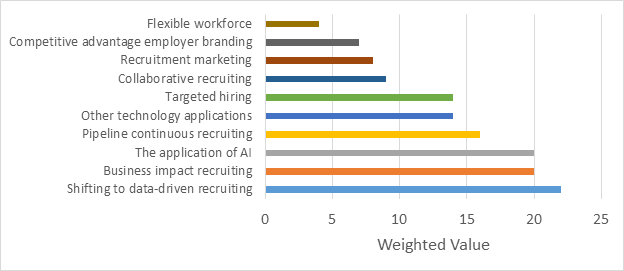 人才招聘
人才招聘
 人才招聘
人才招聘
 人才招聘
人才招聘
 人才招聘
人才招聘
 人才招聘
人才招聘
 人才招聘
人才招聘
 人才招聘
人才招聘
 人才招聘
人才招聘
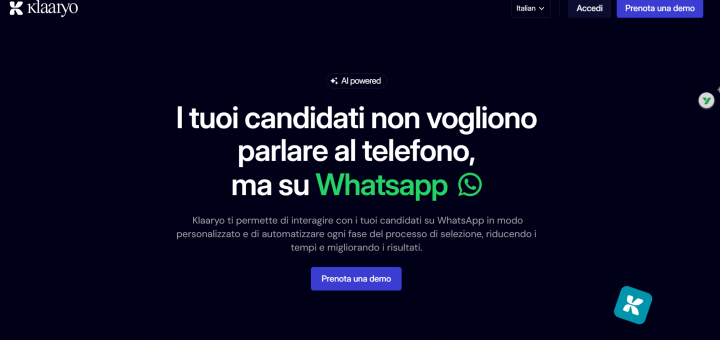
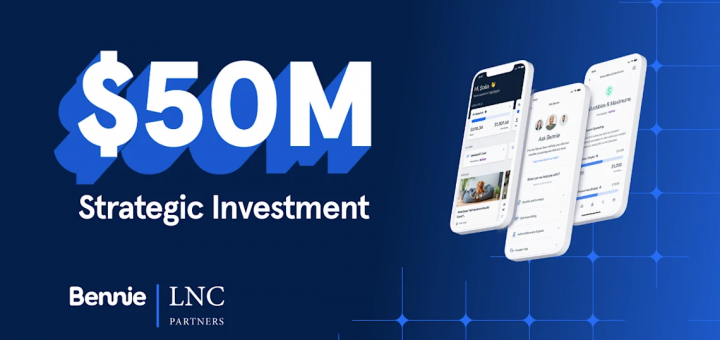
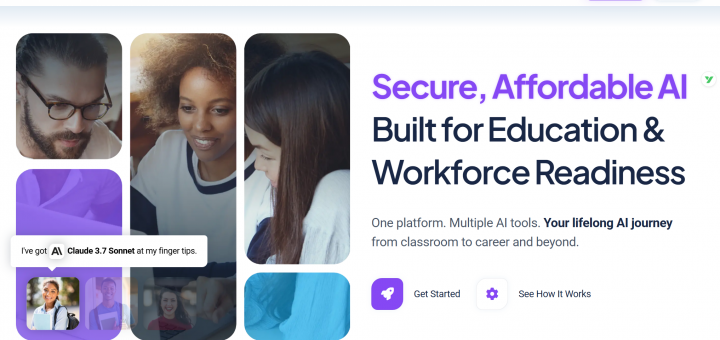


 扫一扫 加微信
hrtechchina
扫一扫 加微信
hrtechchina

